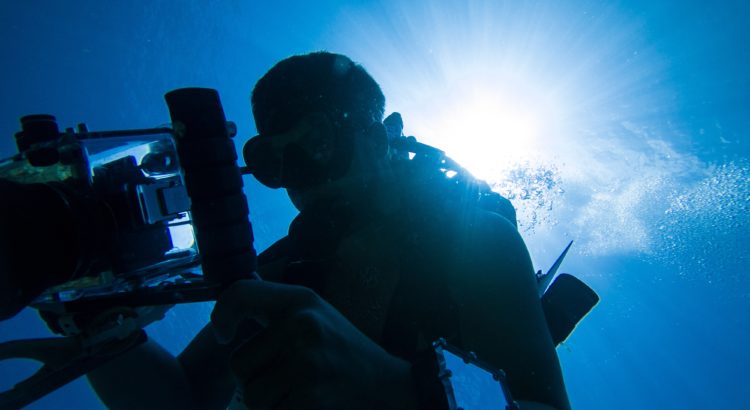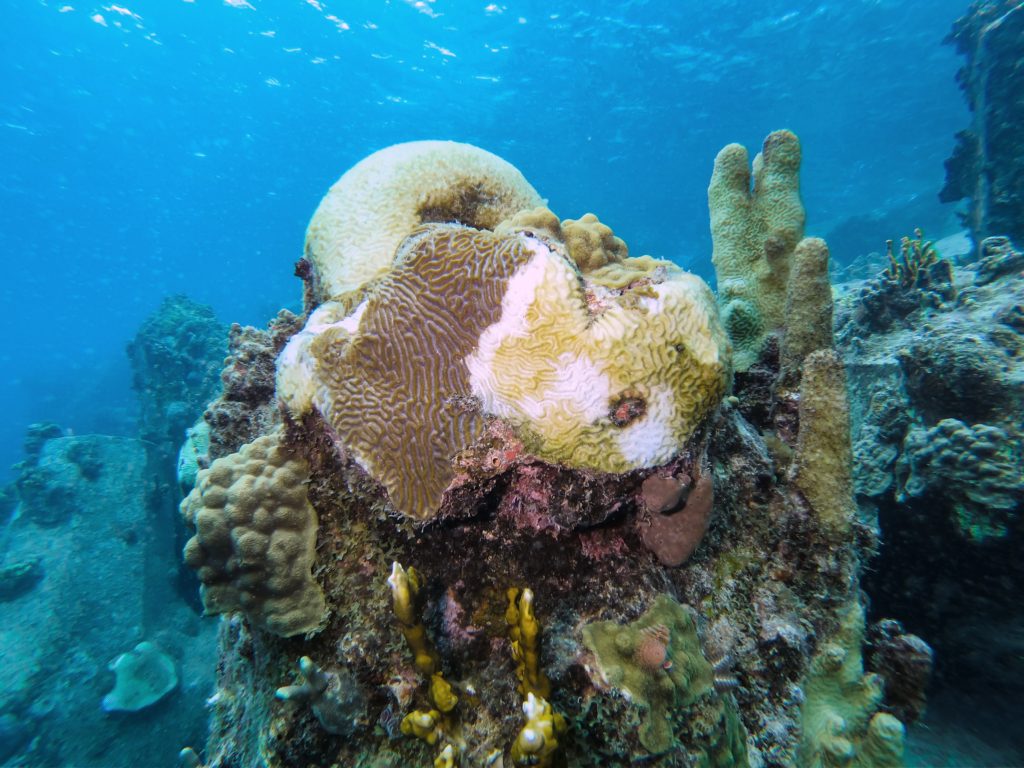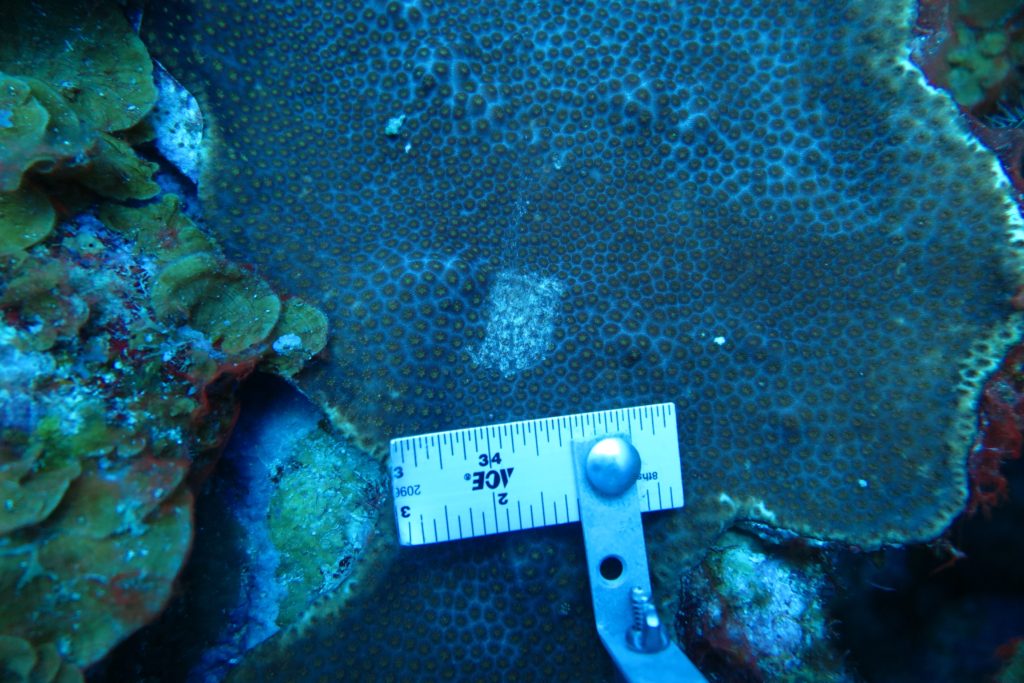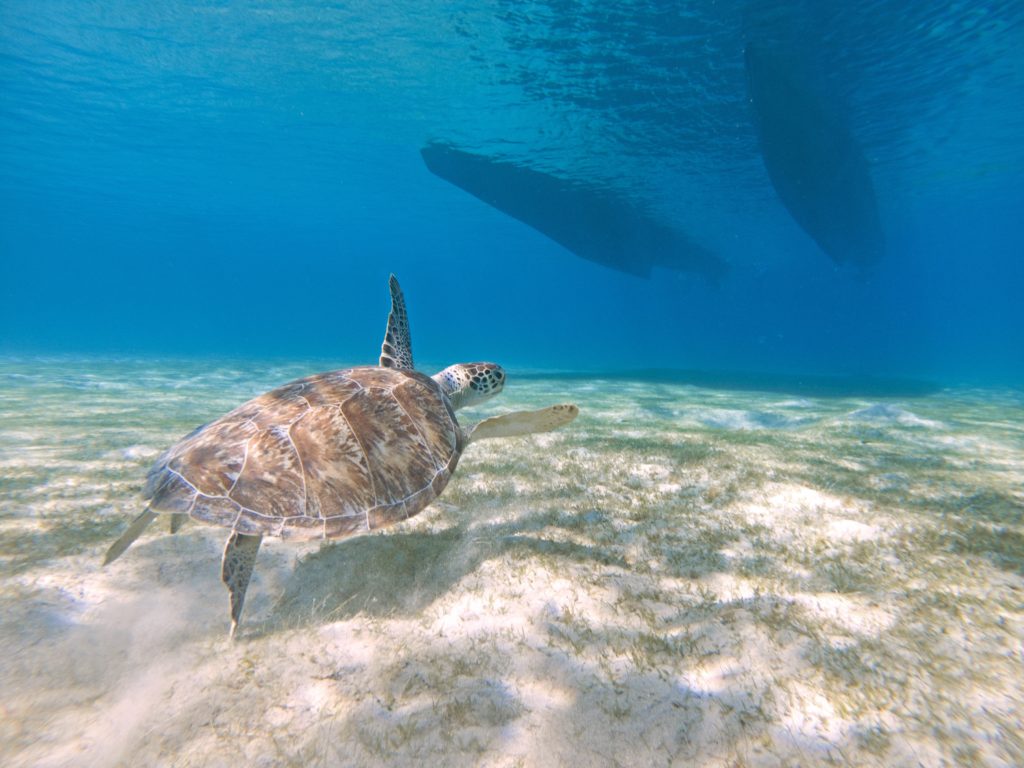Stony Coral Tissue Loss Disease in the USVI
In january of 2019, a new coral disease was observed off of the southwest of St. Thomas. Although it cannot be confirmed without a known pathogen, scientists believe this disease is Stony Coral Tissue Loss Disease (SCTLD), first emerged in Florida in 2014. Over the course of 1 year, the disease has been confirmed across nearly all of St. Thomas, and has been confirmed in Culebra and western St. John. Unlike other coral diseases, this disease is notably severe for the wide range of coral species it affects, and it’s high mortality rate once a coral is infected. Currently, work is being done to identify diseased areas, monitor disease severity and implement treatments to attempt to save colonies. Learn more about this work at vicoraldisease.org
Lesion recovery in shallow and mesophotic environments in the US Virgin Islands
Following major stress events such as storms, disease outbreaks, or bleaching events, surviving corals must regenerate tissue in order to recover. We aimed to understand how this recovery changes from shallow to mesophotic depths, hypothesizing that deeper corals would regenerate more slowly and that this may limit resilience to storms and other acute stressors. Two species of reef building coral, Orbicella franksi (an intermediate-depth species) and Agaricia lamarcki (a depth-generalist), were tagged at selected sites across their overlapping depth range of 13 to 41m and directly monitored for recovery rate from experimentally generated lesions across time. Overall, recovery rates were distinct between species and across depths, with O. franksi, recovery rates showing high variability and declining at depth, behaving significantly different from A. lamarcki, the depth generalist. A. lamarcki maintained similar rates of recovery across the examined depth range, suggesting that it can attenuate its biology with changing light resources to maintain healing abilities in different environments. Recovery rates were additionally compared against environmental parameters such as temperature and wave energy, as well as against biological parameters such as colony size, lesion shape, and dominant endosymbiont type to understand their impact on recovery. While A. lamarcki recovery was not affected by changes in depth, temperature, or wave energy, O. franksi recovery was affected by depth, wave energy, and temperature variability. Collectively, this suggests that some mesophotic coral reefs, despite having high coral cover, may be slower to recover from stress events if dominated by non-depth generalist species, such as O. franksi, resulting in increased vulnerability to repeated stress
Check out my final thesis manuscript here
Population and Growth of juvenile Chelonia mydas and Eretmochelys imbricata in the US Virgin Islands
Sea turtles, in particular Chelonia mydas and Eretmochelys imbricata, are currently listed as endangered worldwide, and in need of careful monitoring and protection. These turtles in their juvenile stage can be captured, monitored, marked, and released by hand with no harm to the turtle, and therefore this method of monitoring is frequently employed in the Caribbean. The University of the Virgin Islands under the direction of Dr. Paul Jobsis has begun a mark-recapture program of juvenile C. mydas and E. imbricata. Tagging and recapturing of juveniles allows for estimations of local population size, habitat use, and overall health and development of these endangered species. This information is particularly important following the devastating 2017 hurricanes Irma and Maria, which both directly struck the US Virgin Islands and altered the seascape. Using the historically surveyed information in combination with newly captured data following the storms will serve to gain insight on the effects of catastrophic storms on feeding juvenile populations of each species, and if health or size of given populations may be shifted in the short term. This program is constantly evolving and expanding, now exploring juvenile populations outside of Brewers Bay and looking to further investigate juvenile turtle movement, behavior, and physiology.
Results are currently under analysis, but will be summarized in a series of peer-review publications in preparation.
I am presently seeking new research opportunities in independent research as well. I invite you to explore my previous work in the Castillo lab and with Sea Education Association in my Curriculum Vitae



